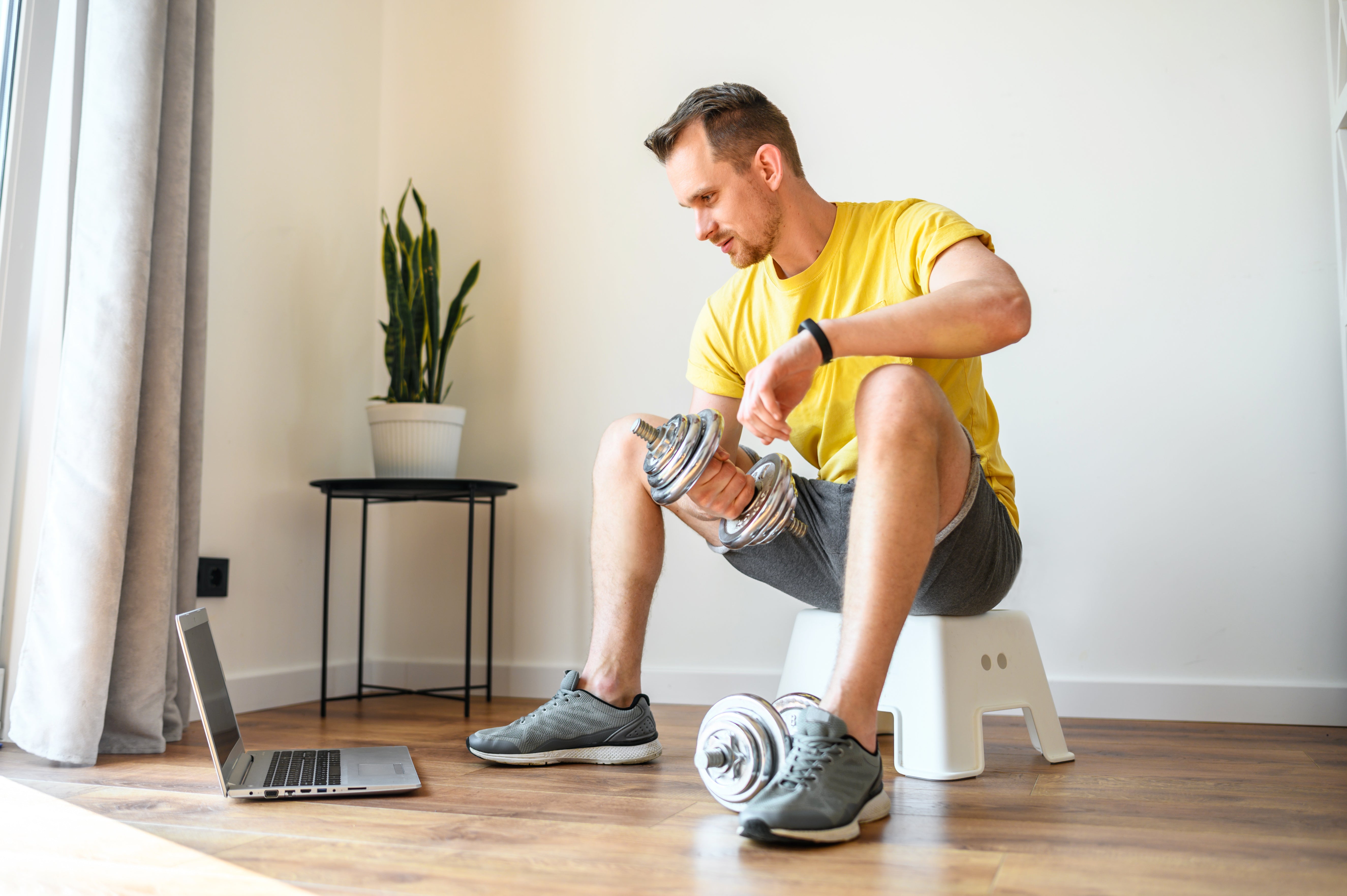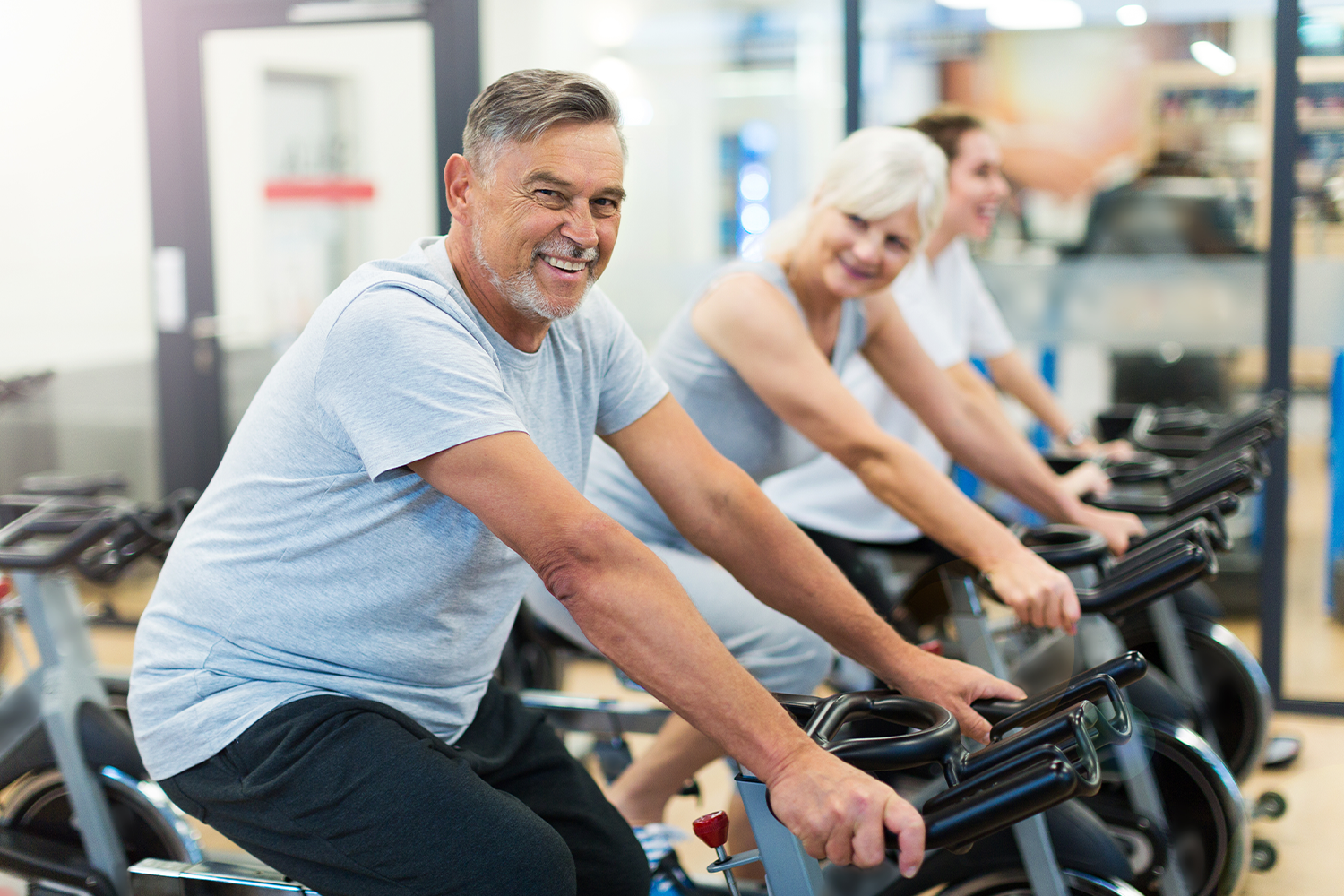Full-body workouts are an excellent choice for someone looking to increase endurance, strengthen muscles and bones, and improve cardiovascular health. While some individuals are incapable of doing full-body workouts due to physical restrictions, this type of exercise is helpful for anyone who can do so.
This guide will help you understand the benefits of these workouts, whether these are safe for your fitness level, and some examples of full-body workouts that you can engage in.
How Is a Full Body Workout Accomplished?
A full-body workout can be accomplished by combining exercises that involve both strength training and cardio. Some of the following exercises target more of the upper body, and some target more of the lower body; therefore, it’s important to do a combination to target every muscle:
- Burpees
- Squats
- Step-ups
- Pull-ups
- Push-ups
- Dips
- Jump lunges
- Kettlebell swings
- Handstands
- Box jumps
- Squat presses
- Bicep curls
- Lunges
- Crunches
- Deadlifts
Some of the following are cardio workouts that can be included: Is it worth adding “Ski Training” to pull in the ski-erg side of our product? Or would it hurt the performance of the rowing link?
- Swimming
- Running
- Biking
- Rowing
How To Create a Full Body Workout
You might look at the above list and wonder where to begin with your workout. There is no exact science to creating these workouts, as the goal is to pick a few exercises and get moving!
However, without guidance, it may be difficult to create a workout routine based on this list. Here is an example that may help start your routine:
- Gather weights depending upon your strength and fitness level- these could be five, 10, 15, or even 20-pound weights.
- Start by warming up with some dynamic stretches.
- Set a timer on your phone for 30 minutes.
- Create a list of 5-10 of the above exercises and put it in front of you- make sure to include a mixture of the upper body, lower body, and core. For example, your list could include squat presses, bicep curls, lunges, crunches, push-ups, and deadlifts.
- Start with your first exercise, complete ten reps, take a 10-15 second break, and then engage in the next exercise.
- Continue this process through each exercise, then start back over at the first move until the 30-minute timer goes off.
- Finish your workout by engaging in static stretches to cool down.
As you can see from the list of exercises chosen in step four, some of these specifically target the upper body, lower body, or core, while others target multiple muscles at once. By combining several of these moves, it takes only 30 minutes to work your entire body.
If you want to challenge yourself, do away with counting reps and instead do an exercise for 50 seconds on, 10 seconds off, and proceed through the workout in this fashion. In addition, you can make your workout shorter or longer depending upon your day and how much time you have available.
What Are the Benefits of Full Body Workouts?
Full-body workouts are a form of physical exercise that benefits individuals of all races, ethnicities, ages, sex, or fitness abilities. The lack of physical exercise in the United States leads to several health concerns, hospital costs, and overall less fulfilling lifestyles. While certain individuals must be careful when it comes to what kind and how much exercise they engage in, some form of exercise benefits everyone in one way or another. The following benefits can be seen for traditional strength training as well as cardio-focused workouts:
- Muscular, bone, and joint health: full-body exercises build muscle mass and result in stronger muscles, increased bone strength, and increased flexibility of the joints
- Weight loss: full-body workouts increase calorie burn and support weight loss.
- Balance: while many people think only of strength when lifting weights or doing cardio, balance is also a huge perk of full-body workouts. The increased balance will reduce the risk of falls and injuries, especially in the older population.
- Pancreas, lungs, and blood: working out increases oxygen supply in the body, maintains healthy levels of cholesterol and blood sugar, and aids in increased endurance during your workout routine
- Mood: working out, as well as physical exercise in general, is known to support emotional wellbeing, calm the mind, and relax the mood.
- Sleep and energy: exercise is known to relax the mind and ease tension and stress, supporting a healthier sleep schedule.
How Can I Stay Safe While Engaging in Full Body Workouts?
As beneficial as full-body workouts are, there can be risks involved, such as injuries, if done improperly. However, there are many ways to stay safe while exercising:
Choose an Exercise Routine That Fits Your Needs
Make sure to choose an exercise routine that fits your fitness level and goals. For example, if you haven’t worked out in a while, consider starting slower and easier.
When engaging in full-body workouts, begin with lighter weights for a shorter period of time and increase the weight and time intervals as you feel capable. This will prevent injuries and keep you working out long-term.
Use Proper Equipment and Understand how to Do Each Exercise Correctly
When doing a workout routine, understanding how to perform exercises and movements correctly is essential. This will prevent injury and will allow you to work out in a safe and effective environment.
When considering workout equipment, ensure that your machines are functioning properly in order to avoid injury. Lastly, be sure to use a mat or other padding when doing exercises on the ground, as this will prevent pain in your joints from the hard surface.
Talk With a Healthcare Provider if You Are Worried About Your Physical Health
This advice is crucial for those with chronic conditions or health issues. Make sure to talk with your healthcare provider to develop a full-body exercise plan that will be beneficial depending upon your condition. Also, be sure to adjust the workout routine depending upon your needs.
For example, if you have pain in your knees, engaging in many jumping exercises is likely to do more harm than good. Instead of doing 50 jumping lunges, try static lunges if possible, or don’t do lunges at all if the pain is too much! While exercise is important, ignoring the pain you feel could be detrimental to your health.
EnergyFit Workout Options
If you need a suggestion for engaging in a full-body workout, EnergyFit’s rowing machines are the perfect go-to! The Ski-Row Air and the Ski-Row Air + PWR are dual-function high-intensity training machines that involve a combination of both rowing and skiing for the perfect full-body workout.
Full-Body Workouts With EnergyFit
When it comes to full-body workouts, they are beneficial for almost all individuals. Remember the importance of understanding your own fitness level and adjusting the workout according to what you are capable of.
Whether you have five minutes or 45 minutes, picking five to ten exercises and rotating through them will provide the perfect workout. If you want to spice up your routine, consider EnergyFit’s rowing machines as a possible addition to your exercise. We truly believe you will love them!
Sources:
10 Full Body Exercises That Get You the Most Bang For Your Buck | Life Hack.org
Physical Activity Guidelines for Americans, 2nd edition | Health.org
5 Benefits of Strength Training | Cancer.org
From Head to Toe: The Benefits of a Cardio Workout | Cleveland Clinic





Leave a comment
All comments are moderated before being published.
This site is protected by hCaptcha and the hCaptcha Privacy Policy and Terms of Service apply.